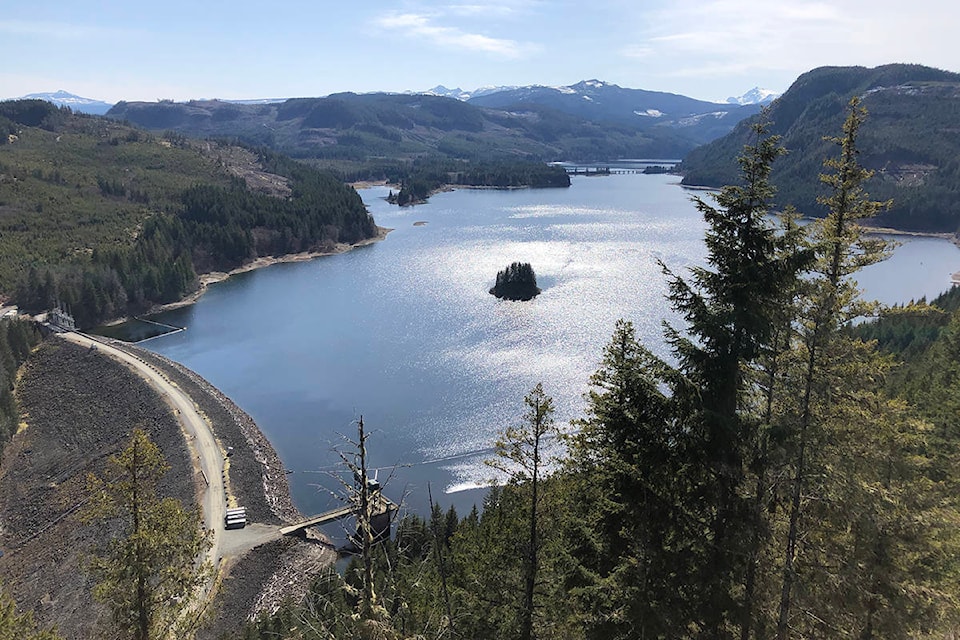BC Hydro is continuing to monitor and adjust to the weather conditions that have turned drier than normal within the Campbell River watershed since February.
The company forecasts another year of low summer reservoir levels and Campbell River flows.
Precipitation has been low since February which was 63 per cent of normal, BC Hydro spokesperson Stephen Watson says in a May 18 update. March was 95 per cent, April was at 58 per cent, and May to date, 67 per cent of normal. May through September are the driest precipitation months of the year.
The snowpack on mountains around the Buttle Lake/Campbell River watershed peaked in early April and began to melt, with snowmelt making up the majority of water inflows since mid-April coming into the watershed. The snowpack has been tracking slightly lower than normal the past few months though there is still a good amount of snowmelt to take place.
“Our February to September water supply forecast is updated each month,” Watson says. “While we started off in February with a forecast of 104 per cent of normal but it has since dwindled with the drier conditions with the updated May forecast to 82 per cent of normal. Last year at this time it was about 80 per cent of normal, though the two main reservoir levels were slightly higher than where they are today.”
RELATED: Campbell River watershed third lowest of BC Hydro’s hydroelectric watersheds in the province
BC Hydro increased the Campbell River flow rate below the John Hart hydroelectric facilities from about 80 cubic metres per second (m3/s) to about 100 m3/s on May 1, which is the fisheries flow target for the salmon out-migration.
With the drier-than-normal water supply forecast as we head into the summer, BC Hydro may potentially lower the river flow in June as it did last year should conditions continue to be dry. The company has initiated communications with government fish agencies on the timing and amount of the flow reduction. As the region heads towards July 1, flows will typically drop down to about 30 m3/s to 35 m3/s.
Over the next week, the forecasted average water inflow into the Campbell River system may be around 180 m3/s.
The water level at Upper Campbell Reservoir/Butte Lake is currently at about 215.45 metres and slowly rising. The summer recreation target from mid-June to early September is 217 m to 220.5 m. BC Hydro forecasts the reservoir level to be near the low end of that range over the summer period.
The Lower Campbell Reservoir/McIvor Lake is currently at about 176.55 metres. The target for this reservoir’s summer recreation level is 176.5 metres to 177.5 metres, and BC Hydro forecasts this reservoir to also be near the low end of that range.
For the Quinsam River, BC Hydro’s water licence minimum river flow rate lowered from 2 m3/s to 1 m3/s on May 1.
“We look to maintain the 1 m3/s flow rate and that should help the water storage in the upstream Wokas Lake, and ultimately, the storage as we move through the summer and early fall,” Watson says. “As we look to the early fall, we look to have enough water in the reservoir system to increase river flows for returning adult salmon for the migration and spawning season.”
BC Hydro may provide a water supply and operations update in June.
RELATED: Campbell River major projects web portal now ready for companies to register
